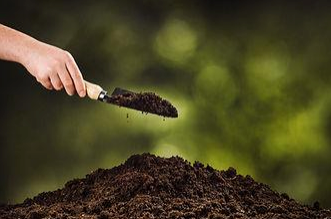BLOG

Chesterfield, VA. When looking for the greatest impact on the lawn for the year, I decided to limit the parameters to change in health, and visual impact. Pre-emergent weed control definitely produces great results with weed control and overall health of the lawn, but does not have quite as dynamic of a visual impact. Aeration paired with seeding is the health and visual impact winner. The ability of aeration and seeding to transform the lawn can make the whole property look completely different in about a month! The benefits to aeration and seeding are immense- opening channels for water, and air exchanges, allowing the roots to be reinvigorated after summer stress, re-establishing areas that may have thinned or struggled in the heat/drought, increasing competition for any weeds that thought they would come into the area and take over, and allow nutrients to enter different soil levels. How does aeration work? Aeration physically opens channels within the soil to allow for air exchange to the rooting zone, the cores come up to the surface to reduce compaction and layering, and we get great seed soil contact increasing the likelihood of success when seeding. When should I aerate? Aeration on cool season lawns generally should be completed as the night time temperatures begin to cool, normally September or October in our area. We are looking for the grass plants to come out of the 24 hour stress during the heat of summer and begin to recover. Aeration and the air exchange created helps the roots get healthy again and repair themselves from the summer months. For warm season lawns, the aeration timing runs from late June through the end of July when the grass is growing most aggressively to heal, that way it is healthy again before the cooling temperatures prevail. How does seeding work? Seeding introduces new plants to the lawn, thickening the stand, reinvigorating a mature lawn with new growth, and the opportunity to add the latest varieties of grass plants with improved disease resistance, pest tolerance, color and drought stress. For those of us with fescue lawns, fescue is a bunch type of grass which does not naturally move laterally to fill any thin areas or gaps in coverage, so we need to annually seed new plants to rejuvenate the lawn. When should seed get planted? Seed needs warm soil temperatures in order to germinate, however it is not very tolerant of high heat once it begins to grow, therefore in this area it is best to plant cool season grass in the September, early October time frame - the soil temperatures are still warm from summer, but the nights are cooler, and the temperatures not as high for as long. For warm season grasses seeding is rarely done, although if necessary in the late spring, early summer so that the new grass gets as many sun days as possible before the temperatures cool. Most warm season grasses are established through springs or sod rather than seed, generally these methods lead to a more successful overwinter or the plants. With these time frames quickly approaching, if you need a big improvement, to reinvigorate or just thicken up the stand of grass - start planning now! If you liked my blog post, share it with a friend! For more information, questions or comments - sign up to share. About me Sean Welch is the owner/operator of SuperTurf LLC where he helps homeowners in the area improve the quality of their lawns and irrigation setups to achieve the success they desire. He was a formerly a golf course superintendent with a degree in Landscape and Turfgrass Management from Virginia Tech.
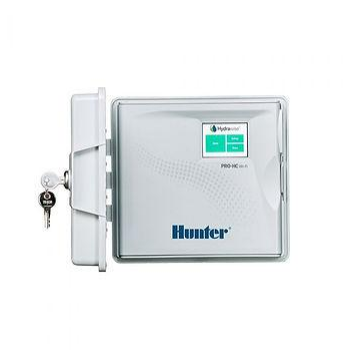
Chesterfield, VA. The answer to how often should I water combines several factors - watering requirements depend on the type of grass on the lawn, the type of soil under the lawn, and exposure that the lawn endures. The idea is to water deep and infrequently as possible to force the roots of the plants to grow down deeper, and the surface can stay firmer with less disease pressure. The cool season grasses will require more water than warm season during the summer months. The frequency of watering for cool season grasses - think fescues - is ideally once per week. In the off season, we can get away with once per week, as the summer nears, usually we require twice a week. At this point in the year, say mid June, we see what type of summer weather we get, some years are wet, and some are hot and dry each demands a different schedule. When we get hot and dry, we first take the station watering times up, only adding an additional day if absolutely necessary. Normally irrigation systems are built to supplement nature, but in times of drought and extreme heat, they have to be turned up in an attempt to replace nature. Clay soils hold water longer, but take longer to get the water to penetrate to depth, sandy soils frequently dry out quickly due to the air, and lack of organic matter to hold onto moisture. Loams are the best mix, marrying the penetration of a sandy soil with the organic matter/moisture holding of a clay soil, the best of both worlds. Exposure can be something simple, but not often thought through. Paying attention to which side of the property is south facing, west facing and demands more water due to the excessive afternoon heat, which zones will need to be turned up 10-50% in order to account for that difference. In the same way, areas of low exposure can be turned down, thinking of north facing, or shaded areas not in competition from tree roots. We are looking to apply approximately one inch of water to the lawn weekly. On clay soils that may remain one cycle per week, on sandy soils it may mean 2-3 smaller cycles per week because the soil will not hold the moisture the same way. How do we know how much is 1" of water per week? We can use the catch can analysis test to set up and maintain how long each zone needs to run in order to get 1" of water. This analysis test will also help fine tune the zones so that they are watering based on output rather than guessing how long each should run. Upon completing the catch can analysis test to find out how long to run each zone for 1" of water to be applied, we can take into consideration the grass type, soil type, and environmental exposure factors to further manipulate the output. For example if a zone needs to run for 30 minutes to put out 1" of water per cycle, and that zone is south facing, it may need to receive an extra 20-25% time to maintain equivalent moisture levels to another zone which is east facing and getting 1" per week. Although the test and irrigation factors may seem complex, once they are set up correctly along with controller systems they can save you on wasted water, disease problems, and your monthly water bills while giving you a better lawn to boot. A better lawn with less time and money inputs is an amazing combination. If you liked my blog post, share it with a friend! For more information, questions or comments - sign up to share. About me Sean Welch is the owner/operator of SuperTurf LLC where he helps homeowners in the area improve the quality of their lawns and irrigation setups to achieve the success they desire. He was a formerly a golf course superintendent with a degree in Landscape and Turfgrass Management from Virginia Tech.
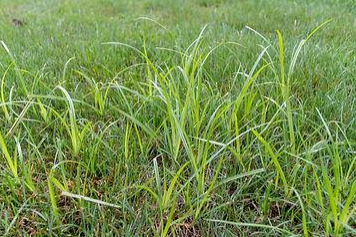
Chesterfield, VA. Have you noticed a light green weed outpacing the growth of your lawn 2-1, does it seem like just a couple days after mowing, it is back at full height and mocking you? If this is the case, you most likely have a weed called yellow nutsedge. Clearly defined by a triangular stem, nutsedge can be the bane of existence on lawns that are otherwise well maintained. Generally, nutsedge is found in sunny but wet areas including areas with poor drainage or where over watering practices are occurring. It is a perennial plant, so it will come back every year, and propagates through rhizomes, nutlets, and seeds. Objectively, the properties of the plant can make it hard to control, requiring a more consistent, steady effort than a blitz. Ensuring drainage in the areas that nutsedge grows is adequate, and setting irrigation controllers so that water is put down less frequently, will allow the soil in these areas to dry out and help reduce the outbreaks of nutsedge. With regards to reduction, suppression, and control, we look to a combination of efforts including preventing the nutsedge from going to seedhead. Just by keeping the plant from reaching seedhead alone, you are reducing the pressure that the weed is putting on the lawn. With the plant’s ability to propagate three different ways, I would recommend against pulling the weed and resort to some sort of chemical control. In a non-lawn area, with a non-selective herbicide such as Glyphosate (trade name Round Up), basic control can be achieved. In a lawn area, we must rely on 2-3 herbicide types in the same family which will help us work on not only the surface disruption that nutsedge causes, but also work on treating the nutlets and rhizomes that it uses to spread. Using chemicals in the sulfuron family at label rates will meet such a standard. Halosulfuron-methyl (trade name Sedgehammer) is a chemical treatment that treats both yellow and purple nutsedge, and is considered to be more gentle on turfgrass types in our area from fescues, bluegrasses, ryegrasses, bermuda grass and st. augustine at the proper rates. Sulfentrazone (trade name Dismiss NXT) with carfentrazone is a treatment for yellow nutsedge, as well as a few other broadleaf type weeds in grasses including tall and fine fescues, kentucky bluegrasses, ryegrasses, bermudagrasses, and others. If you are looking for a product made for warm season grasses only such as bermuda grass or zoysia, Sulfosulfuron (trade name Certainty) can be used. The earlier in the plant life cycle that treatment begins, the easier it is to control, the greater the size and maturity the difficulty increases significantly. Always make sure you are able to adhere to the safety protocols, rates and application methods for the safety of you, your lawn, and the environment. If you are not able to meet these standards, please refrain from making an application yourself and look to a licensed, insured professional with the proper equipment to make successful applications. If you liked my blog post, share it with a friend! For more information, questions or comments - sign up to share. About me Sean Welch is the owner/operator of SuperTurf LLC where he helps homeowners in the area improve the quality of their lawns and irrigation setups to achieve the success they desire. He was a formerly a golf course superintendent with a degree in Landscape and Turfgrass Management from Virginia Tech.
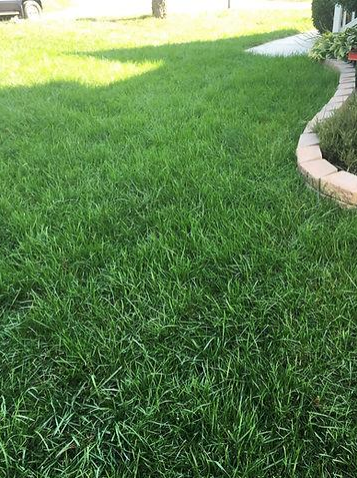
Chesterfield, VA. My neighbor’s grass is green, mine is still off color, what am I doing wrong? When we look at the reasons that lawns green up during the spring months, there are a few factors that directly impact the speed and vigor of turfgrass early in the season. The first thing that we look at is did the lawn get the food necessary for spring growth in the fall. Believe it or not, the speed of green up in the spring is directly related to the plants having their carbohydrate stores filled for the winter. Over the winter months the plants can mature, harden off and grow roots because they are not pushing top leaf growth. The plants being fed before going into the winter months gives the plants the energy it needs to complete these cycles, and have enough carbohydrates stored to green up and begin growing vigorously as soon as weather begins to warm. Plants that have not been fed will be slower out of the gate due to the reserves being used over the winter. Without stores left to feed the spring growth, they won't receive nutrients until spring fertilizer applications - effectively working from behind throughout the year. The second factor that we look at would be the variety of grass on the lawn. Grass stands with bluegrass normally stay a little greener over the winter months than a tall fescue blend. Bermuda grass is a warm season grass that will not completely green up until a month or two after mowing season starts with the cool season grasses(bluegrass, fescues). The variety will determine how soon the grass will naturally green up on its own, so if early green up color is important to you, making an effective seed choice during fall over seeding will be a top priority. A third factor would be the moisture levels within the soil available to the plants in the lawn. Has spring rainfall been enough? Has it been a windy, dry winter? Any other environmental reasons that would change the availability of the necessary plant requirements for function? The environmental factors surrounding your home are also something to consider. For example, does the back yard get full sun during the day, or is it partially shaded by trees; does the front yard that is slower to green up face north (less sun and heat through the day to warm the soil), or does it face southwest and gets all the advantages of the afternoon sun beaming down on it? Although seemingly small variables, they add up to make a difference on timing of green up based on soil temperatures. The remaining factors would mainly be determined by a soil test. The first thing that would be looked at is the pH which can exponentially impact the availability of the nutrients in the soil to the grass plants. Getting soil pH to 6.5 is a top priority in order to maximize the fertilizer, and nutrients available in the soil so that the products are not wasted and remain readily available. Making sure that nutrient levels are within optimum parameters, and there are not any micro nutrients that are severely lacking that would hold back the potential of the lawn. If you look at the list of parameters, each has their own place in affecting a delayed green up response in the spring months. Take your time to figure out which is the most likely source(s) of concern and work on the ones that you can change. Over time, you will move the lawn in the direction you are looking for and get the earlier spring green up color you desire. About me Sean Welch is the owner/operator of SuperTurf LLC where he helps homeowners in the area improve the quality of their lawns and irrigation setups to achieve the success they desire. He was a formerly a golf course superintendent with a degree in Landscape and Turfgrass Management from Virginia Tech.
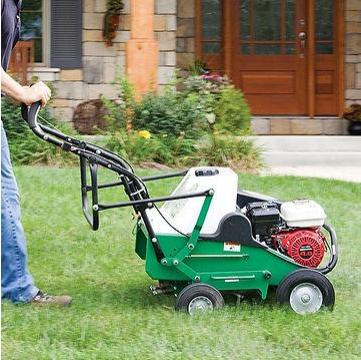
Chesterfield, VA. When should I aerate and seed - a simple question with a multi-part answer in the central Virginia area. Aeration and seeding -- what are we hoping to accomplish? When aerating in order to seed, we are aiming to disrupt the soil and provide good seed soil contact, aiding in the success rate of the seeding. There are a few problems with aerating and seeding in the spring as opposed to the fall. The main thing that we should be focused on during the spring months is timing the application for pre-emergent weed control. The pre-emergent weed control is the most important application of the year, it sets the base for success. When the spring application goes down, it is forming a layer in the top of the soil so that when a seed tries to sprout, it is absorbed in the radicle root of the seed, and killed so that it can not mature into a weed plant. If we go to aerate and seed during the same time period, we are now disrupting the protective layer we have put down to create a weed free lawn. The disruption in the layer now allows weed seeds to also germinate in the seedbed created in the lawn, creating exactly what we are trying to eliminate in a weed free lawn. There are a couple pre emergent treatments (Mesotrione, Topramazone) that will allow us to seed at the same time while still protecting against summer weeds, however these treatments do not change the other environmental characteristics of seeding during spring time. The largest problem with seeding in the spring in the Virginia/mid Atlantic area is summer heat. When we seed in the fall, the new grass plants have time to absorb fertilizer nutrients and form carbohydrate stores which allow the grass plants to harden off and become stronger. The plants have healthy roots, stored carbohydrates, and are as ready as they can be to take on the ridiculous summer heat and humidity in this transitional area. Cool season grass types including tall fescue and bluegrass are not happy over 84 degrees, so the more mature the plants are, the better they fare. When seedlings come up in April or May, they barely have any time to mature, or get the carbohydrates and rooting systems in place to survive the summer onslaught. Some figures find that you could maintain 30-50 percent of a seeding in the spring, where you may be able to maintain 90 percent of a fall seeding. When making the investment to a healthy, weed free lawn, the fall timing is a much better investment. Although the desire to make an immediate change will be very strong in the spring months when everyone's lawns are greening up and looking good, the best time to make a change is transitioning out of the summer into the fall when it comes to seeding in central Virginia. By getting the schedule correct, you give yourself the absolute best chance for success and the lawn you always hoped to achieve. You will rarely win when you choose to take on Mother Nature. What are some things other than aerate that you can be doing to prepare the lawn for a fall seeding? If you liked my first blog post, share it with a friend! For more information, questions or comments - sign up to share. About me Sean Welch is the owner/operator of SuperTurf LLC where he helps homeowners in the area improve the quality of their lawns and irrigation setups to achieve the success they desire. He was a formerly a golf course superintendent with a degree in Landscape and Turfgrass Management from Virginia Tech


